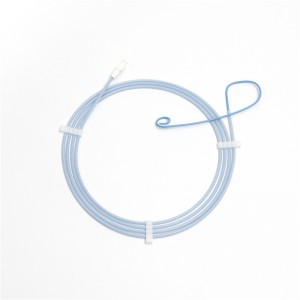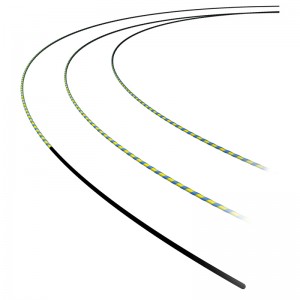
Gastroscope Accessories Diamond Shaped Stone Extraction Basket for Ercp
Gastroscope Accessories Diamond Shaped Stone Extraction Basket for Ercp
Application
Intended to extract the stones from the biliary ducts and foreign bodies from the lower and upper digestive tract.
Specification
| Model | Basket Type | Basket Diameter(mm) | Basket Length(mm) | Working Length(mm) | Channel Size (mm) | Contrast Agent Injection |
| ZRH-BA-1807-15 | Diamond Type(A) | 15 | 30 | 700 | Φ1.9 | NO |
| ZRH-BA-1807-20 | 20 | 40 | 700 | Φ1.9 | NO | |
| ZRH-BA-2416-20 | 20 | 40 | 1600 | Φ2.5 | YES | |
| ZRH-BA-2416-30 | 30 | 60 | 1600 | Φ2.5 | YES | |
| ZRH-BA-2419-20 | 20 | 40 | 1900 | Φ2.5 | YES | |
| ZRH-BA-2419-30 | 30 | 60 | 1900 | Φ2.5 | YES | |
| ZRH-BB-1807-15 | Oval Type(B) | 15 | 30 | 700 | Φ1.9 | NO |
| ZRH-BB-1807-20 | 20 | 40 | 700 | Φ1.9 | NO | |
| ZRH-BB-2416-20 | 20 | 40 | 1600 | Φ2.5 | YES | |
| ZRH-BB-2416-30 | 30 | 60 | 1600 | Φ2.5 | YES | |
| ZRH-BB-2419-20 | 20 | 40 | 1900 | Φ2.5 | YES | |
| ZRH-BB-2419-30 | 30 | 60 | 1900 | Φ2.5 | YES | |
| ZRH-BC-1807-15 | Spiral Type(C) | 15 | 30 | 700 | Φ1.9 | NO |
| ZRH-BC-1807-20 | 20 | 40 | 700 | Φ1.9 | NO | |
| ZRH-BC-2416-20 | 20 | 40 | 1600 | Φ2.5 | YES | |
| ZRH-BC-2416-30 | 30 | 60 | 1600 | Φ2.5 | YES | |
| ZRH-BC-2419-20 | 20 | 40 | 1900 | Φ2.5 | YES | |
| ZRH-BC-2419-30 | 20 | 60 | 1900 | Φ2.5 | YES |
Products Description
Super Smooth Sheath Tube
Protecting working channel, Simple Operation
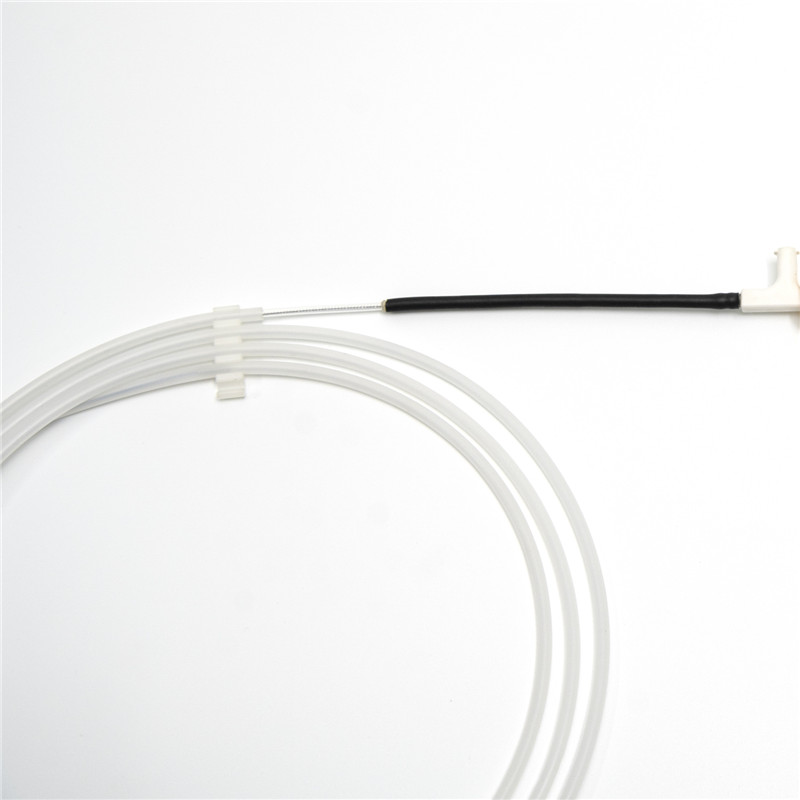
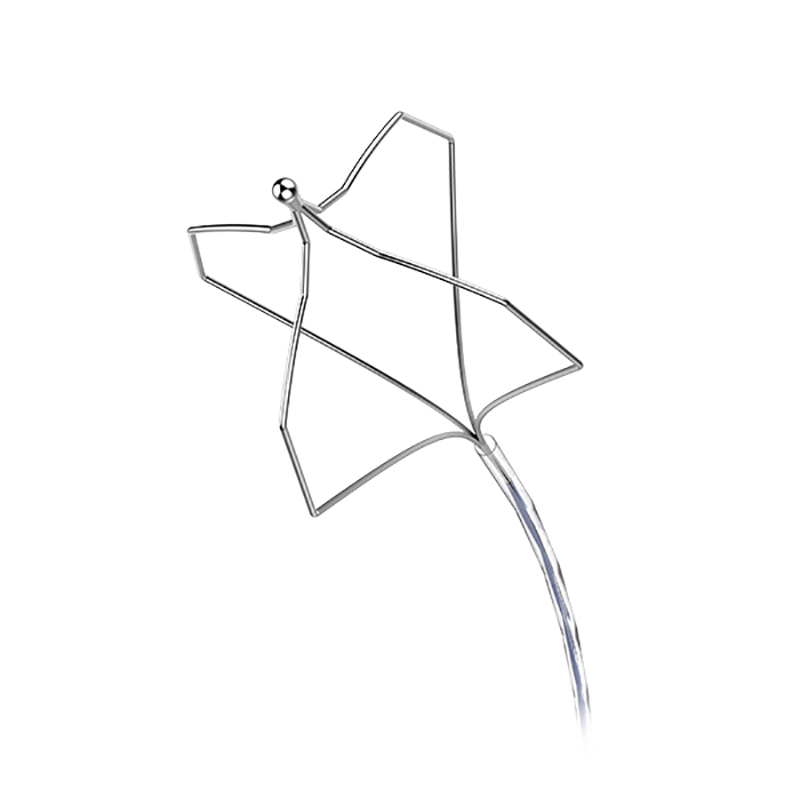
Strong Basket
Excellent shape keeping
Unique Design of Tip
Effectively help to solve stone incarceration
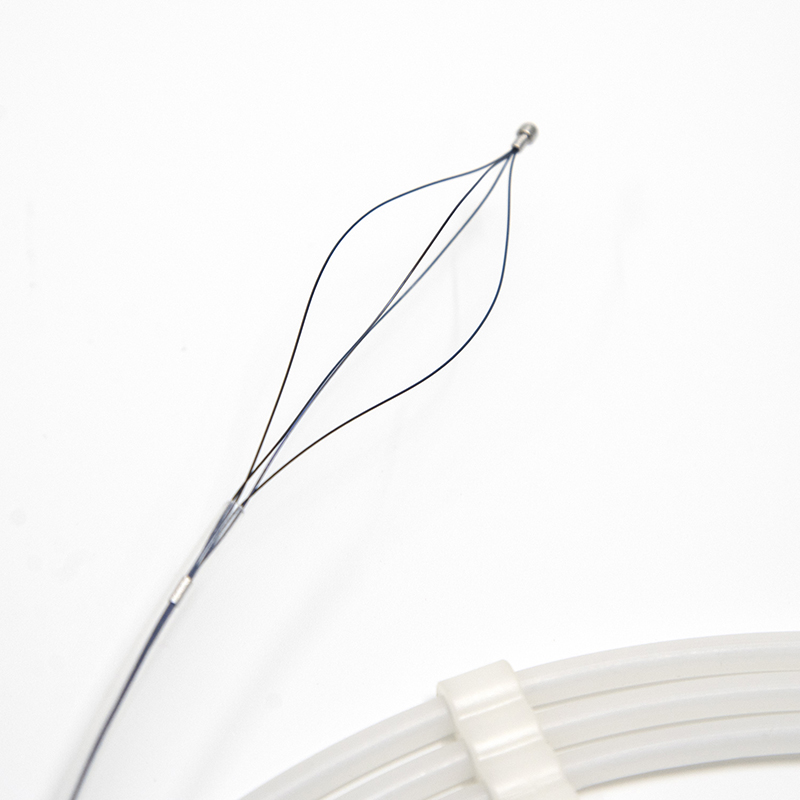
How to remove common bile duct stones with ERCP
ERCP to remove bile duct stones is an important method for the treatment of common bile duct stones, with the advantages of minimally invasive and quick recovery. ERCP to remove bile duct stones is to use endoscopy to confirm the location, size and number000000000000000000000000000000000000000 of bile duct stones through intracholangiography, and then remove the bile duct stones from the lower part of the common bile duct through a special stone extraction basket. The specific methods are as follows:
1. Removal through lithotripsy: the common bile duct opens in the duodenum, and there is the sphincter of Oddi in the lower segment of the common bile duct at the opening of the common bile duct. If the stone is larger, the sphincter of Oddi needs to be partially incised to expand the opening of the common bile duct, which is conducive to stone removal. When the stones are too large to be removed, the larger stones can be broken into smaller stones by crushing the stones, which is convenient for removal;
2. Removal of stones through surgery: In addition to endoscopic treatment of choledocholithiasis, minimally invasive choledocholithotomy can be performed to remove stones through surgery.
Both can be used for the treatment of common bile duct stones, and different methods need to be selected according to the patient's age, the degree of bile duct dilatation, the size and number of stones, and whether the opening of the lower segment of the common bile duct is unobstructed.











